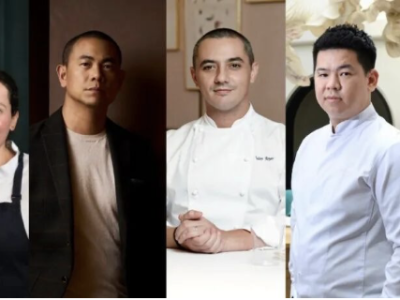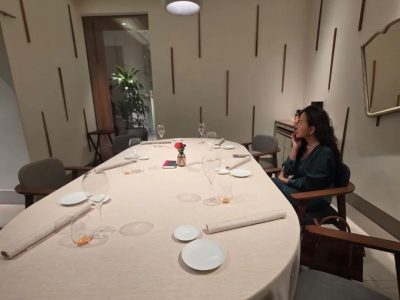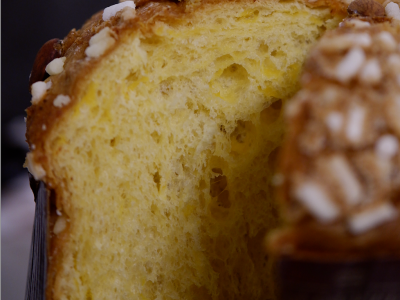I've always loved sushi. Being in Niigata Prefecture, the “Land of Rice and Fish”, sushi was definitely not to be missed. Even more so, our destination that day was no ordinary sushi joint, but “Sushi Tokiwa,” a Michelin one-star establishment that’s notoriously difficult to book. Its main branch is in Shibata City, but the destination of the trip was its newly opened branch in central Niigata City.
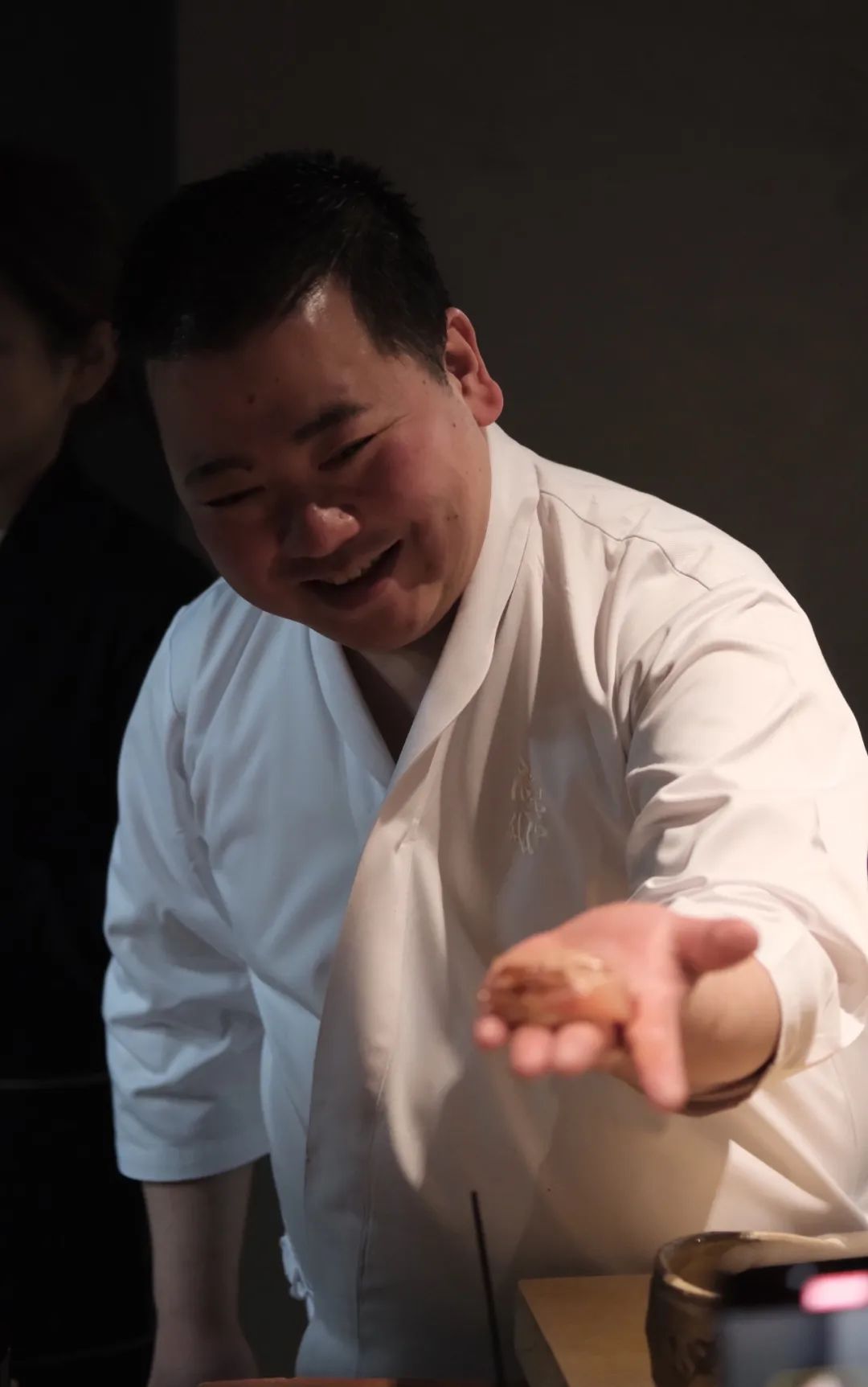 Chef Kosuke Kobayashi of Sushi Tokiwa先生
Chef Kosuke Kobayashi of Sushi Tokiwa先生
As we entered, the first thing that caught our eyes was the counter made from a single slab of 300-year-old zelkova wood—a rarity for a sushi restaurant. Bathed in warm light, Chef Kosuke Kobayashi greeted us with a beaming smile. Though it was our first visit, the welcoming atmosphere felt like coming home. The first course was pufferfish shirako porridge—perfect for the lingering chill of early April. Rich shirako emulsified with rice starch created a porridge as silky as béchamel. Spring mountain vegetables like udo and urui added a crisp, slightly bitter contrast. It was a bowl of hearty porridge blending ingredients from both mountain and sea. Seeing us curiously examine the ingredients, Chef Kobayashi kindly brought out a platter of wild vegetables to display.
The hearty porridge warmed us from the inside out, followed by one of Niigata’s specialties—sakura trout (sakura masu). Caught during their spawning migration from sea to river when cherry blossoms bloom, they are aptly named. I’ve always loved trout: its flavor is reminiscent of salmon, but the texture is more delicate and the fat more luscious. Sushi Tokiwa’s sakura trout, sourced from Sado Island, featured a firm fillet seared until the skin was crispy, with flesh that transitioned in color from milky white to translucent pink-orange—intensely fragrant. It came with grated daikon laced with scallion oil. Despite the cut being relatively lean, the tender texture allowed it to melt effortlessly on the tongue.
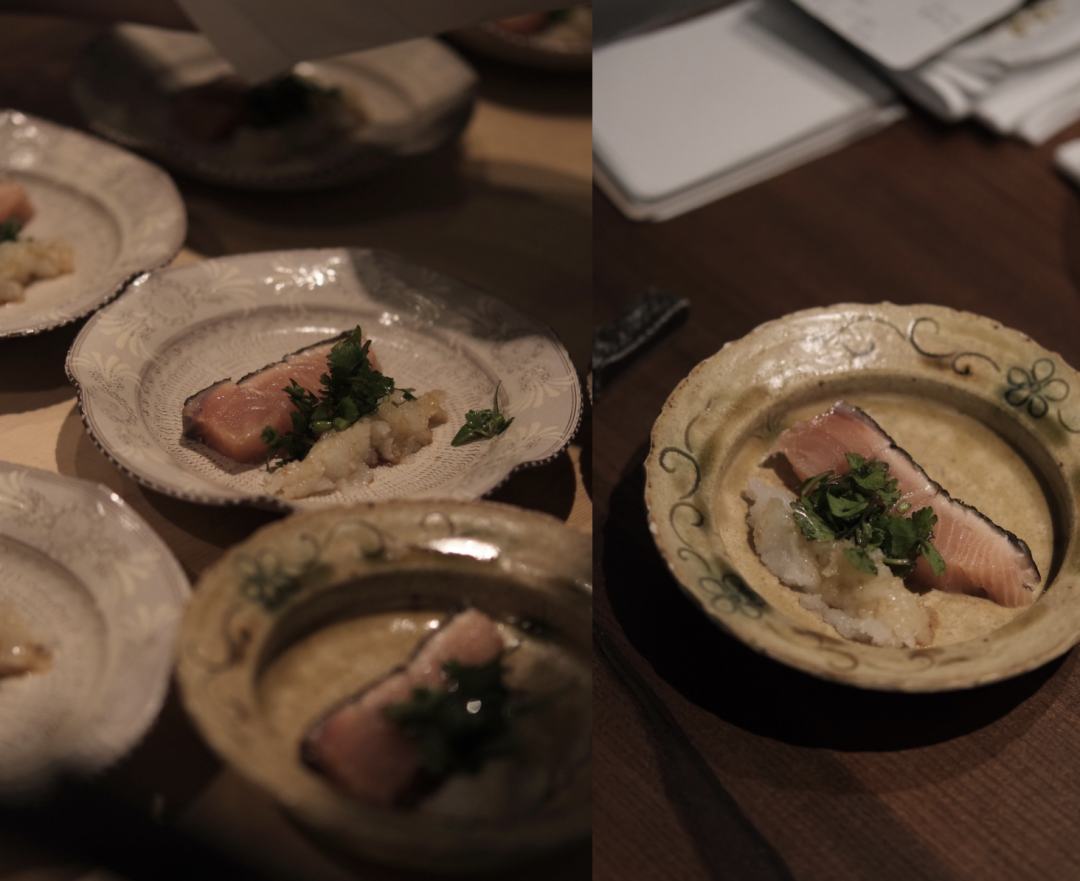 Sakura Trout
Sakura Trout
Sado Island, where the trout was sourced, lies northwest of Niigata Prefecture. Surrounded by sea and located at the confluence of warm and cold currents, it’s a treasure trove of seafood. Several other fish of the sushi were also from Sado. For instance, sea bream was lightly cured in kombu broth and salt, then finished with a dusting of sudachi zest—an exquisite balance of umami and citrus. The vibrant red amaebi (sweet shrimp), nicknamed “nanban ebi” (chili shrimp) in Niigata due to their resemblance to chili peppers, were especially large and translucent. Two shrimp curled and rested atop a ball of sushi rice—adorably presented. The chef sprinkled on powder made from shrimp heads and shells, enhancing the sweetness with deep umami. The moderately acidic rice further lifted the flavor—a true umami bomb.
Speaking of sushi rice, Chef Kobayashi uses Koshihikari rice from Shibata, Niigata. Known for its high starch content, it cooks up glossy, sweet, and sticky—yet still delicious even when cooled, making it ideal for sushi. Compared to other regions, Koshihikari rice grains from Shibata are even larger and firmer. When cooked, the rice turns out distinctly separate and texturally satisfying. Depending on the fish, the chef also subtly adjusts the seasonings of sushi rice. For instance, with sweet, slippery squid, he adds yuzu zest; for Japanese halfbeak (sayori), he mixes in scallions. Overall, the acidity ismilder than traditional Edomae sushi—never overpowering, but always enhancing the ingredient's flavor. Some combinations might seem too creative to imagine, but after one bite you’ll realize that they totally make sense.
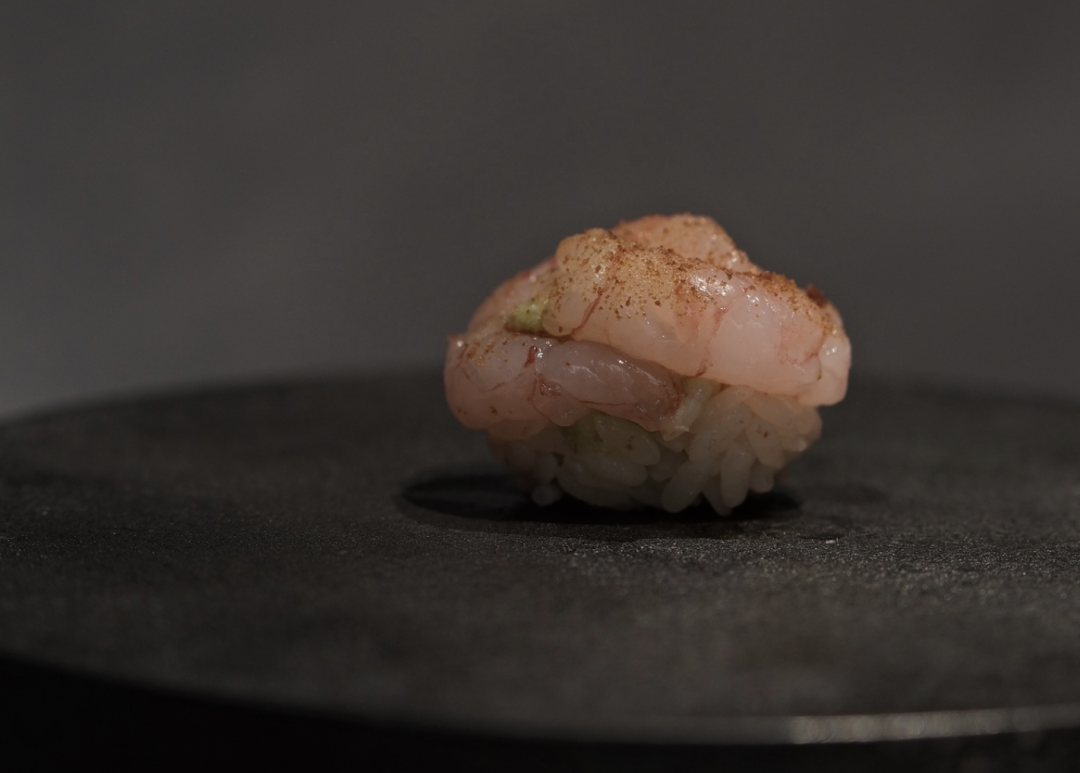 Nanban Ebi
Nanban Ebi
Throughout the meal, dishes alternated between otsumami (small plates) and nigiri, continuously refreshing the palate. At many sushi restaurants, the otsumami can feel like an afterthought—but not at Sushi Tokiwa. Every dish was memorable: A seasonal Spanish mackerel was slow-cooked to a perfect medium-rare, served with yamsauce and crispy seaweed rice crackers—a delicate balance of textures.
Another dish that stood out was the deep-fried pufferfish. It was coated in a batter made of glutinous rice flour and beer, then fried to golden-brown. It was as juicy as the fried chicken (karaage), if not juicier. The batter was pleasantly chewy thanks to the glutinous rice flour, while the bubbles from the beer also enhanced the crispness and made it more caramelized. A squeeze of sudachi was all it needed.
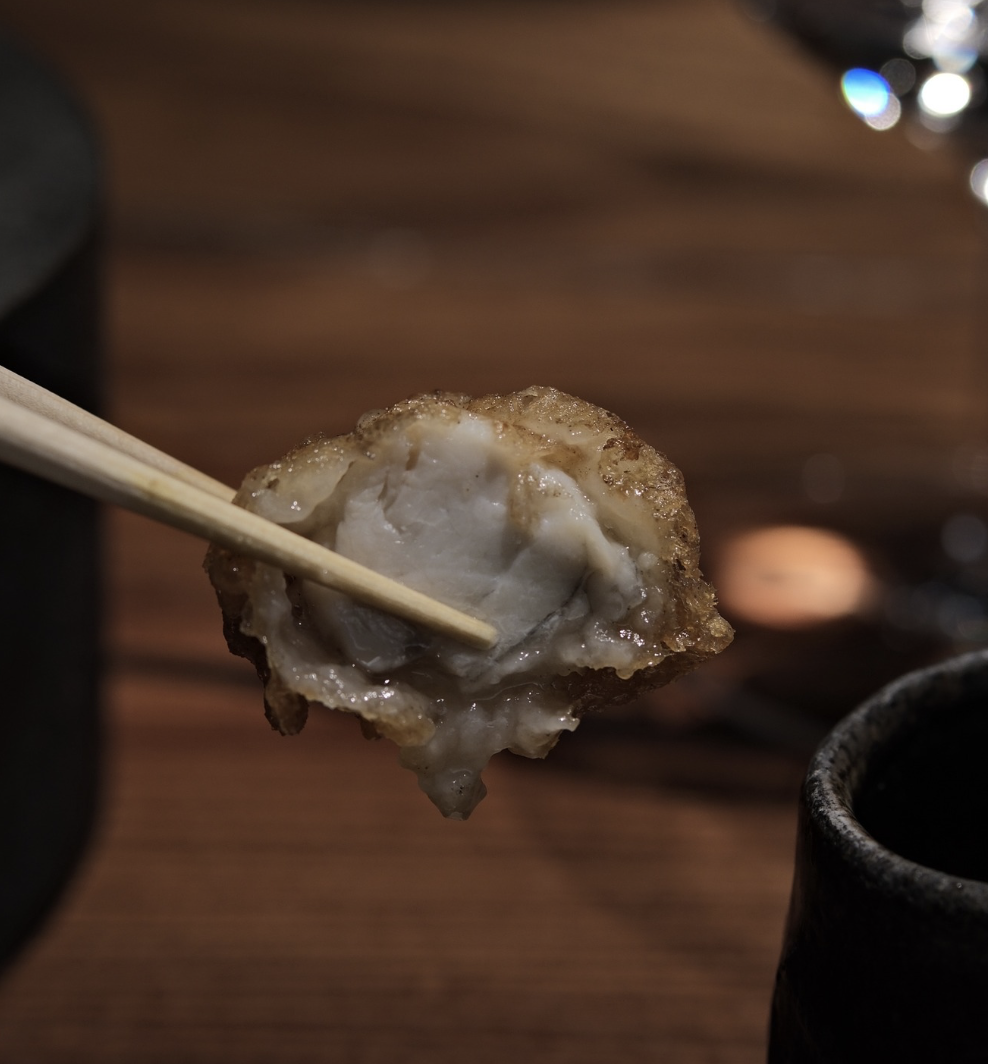 deep-fried pufferfish
deep-fried pufferfish
If you ask me one dish that I’ll never forget from the meal, I’ll give my answer: sakura trout belly sushi. I’ve always loved fatty fish. In fact, I was hoping for the belly cuts while enjoying the trout fillet earlier. As if Chef Kobayashi could read my mind, he fulfilled my wish later in the meal. The trout belly had one of the most gorgeous marbling I’ve ever seen. The pearlescent rice, slicked with fat, shimmered like a gem. The warmth of the tongue itself is already enough to make the trout melt. The rice also had a higher acidity in order to balance the richness. What a heavenly bite!
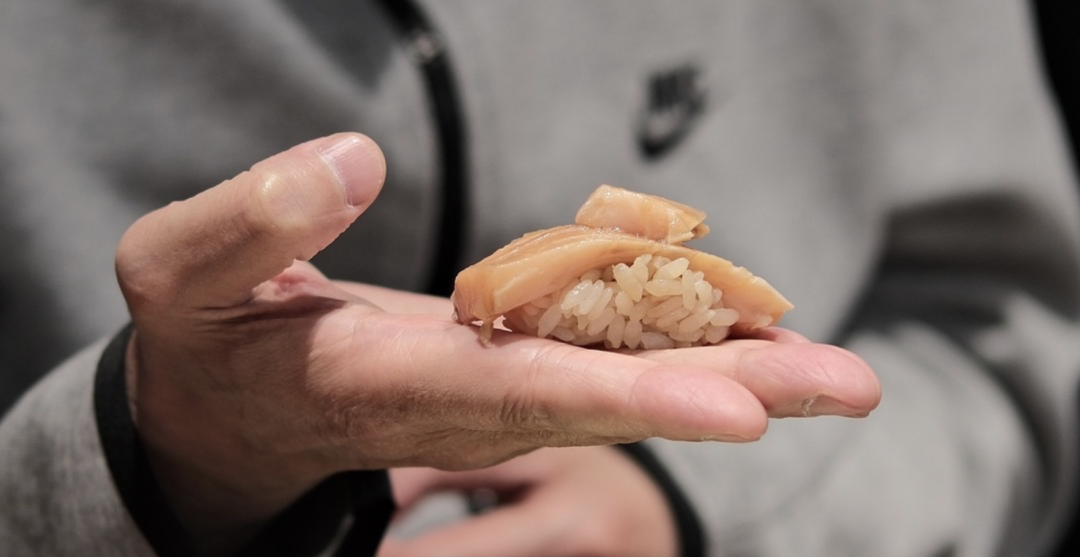 Sakura Trout Belly
Sakura Trout Belly
Another unforgettable piece of sushi was Kuromutsu (Gnomefish), at its fattiest in winter. Chef Kobayashi heated an iron rod and gently seared the skin, releasing a sizzle. With agentle brush of sauce, he finished it like an artist painting. The skin of kuromutsu was crispy, and the residual heat drew out the fat inside. The sweet, buttery flesh melted right away as soon as I put it in my mouth. “Is this fish or butter?” I momentarily wondered.
Chef Kobayashi’s philosophy is to present sushi that could only be found in Niigata, by maximizing the use of local ingredients. In fact, 99% of the ingredients here are locally sourced, and every bite reflects the terroir of Niigata. The rare exception is the final piece of sushi—anago (conger eel). Comparing to other sushi restaurants, the anago here is thicker, and we were asked to choose to have it seasoned either with salt or soy sauce. I hesitated, but when the chef mentioned that their sauce has been passed down for three generations (over 70 years!), I immediately made up my mind. With the flick of a brush, he applied a caramel-like soy sauce glaze. The anago was so fluffy, as rich as eel and melted like a cloud, leaving a profound aftertaste that I could always remember.
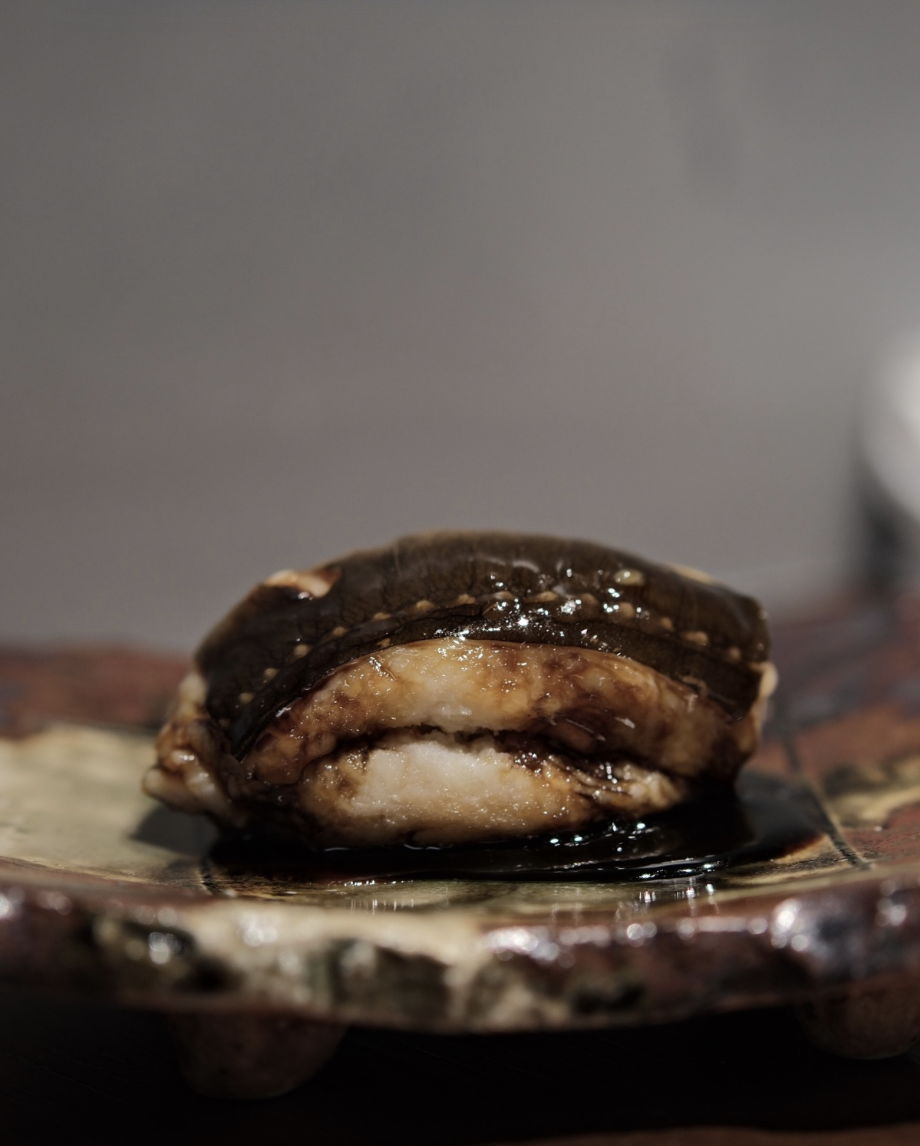 Conger Eel
Conger Eel
As the meal drew to a close, tamagoyaki was served. I often use tamagoyaki as a tiebreaker when choosing between sushi restaurants. I favor the sweet, chiffon cake–like kind with intense egg flavor (like Tokyo’s Harutaka). Sushi Tokiwa’s tamagoyaki was unlike anything I’d seen—creamy yellow, bouncy like egg pudding. The top was torched into a thin caramelized crust. Honestly, it could’ve passed for a crème brûlée. Who needs dessert after this?
As our meal ended, I truly understood why Sushi Tokiwa is considered Niigata’s top sushi restaurant. Founded in 1954, the main branch is in Shibata—the same city where their sushi rice is grown. As the third generation of the sushi restaurant business, Chef Kobayashi had trained in Tokyo’s top sushi restaurants and returned home in 2010. In 2017, he officially took over Sushi Tokiwa and led the restaurant earned a star in the MICHELIN Guide Niigata 2020. In 2024, they opened a branch in Niigata City. Chef Kobayashi now shuttles between the two locations weekly, ensuring people from both locations can enjoy his cuisine. The Niigata branch we visited has also been named one of Tabelog’s 2025 Top 100 Sushi Restaurants in Eastern Japan.
Ever-smiling and full of energy, Chef Kobayashi’s eyes reflect quiet resolve and intense focus. His cuisine is uniquely his own—bursting with seasonal expression, naturally incorporating Niigata’s rich local bounty. More than just delicious, his cooking carries a deep understanding and love for his homeland, expressed through every gesture. It’s deeply moving.
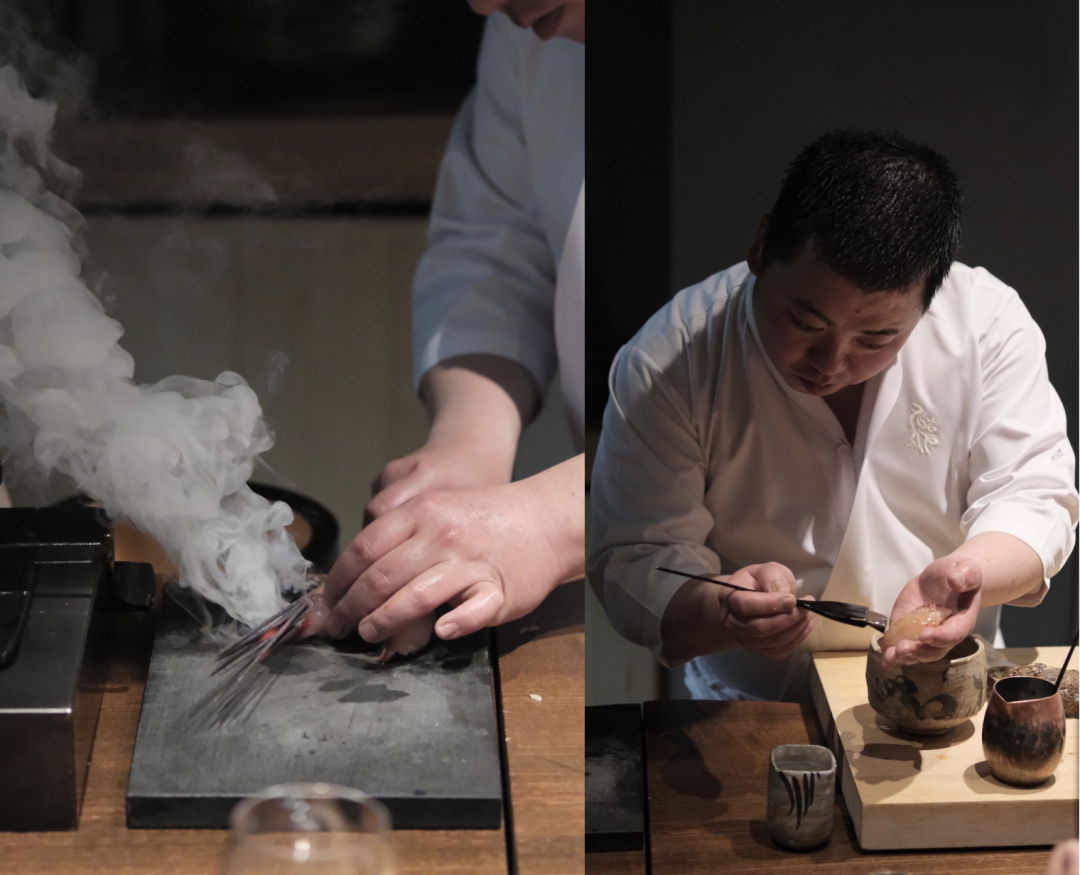
During our visit this time, since there were too many guests to accommodate, Chef Kobayashi made an exception for me and arranged me to sit at the inner counter right by the kitchen. I was super thrilled as I could observe everything in the kitchen better than anyone else could. I joked, “Could I make this my VIP seat for the future as well?”
Because one thing is for sure—I’ll be back in Niigata again, even just for Sushi Tokiwa.
Author: Patty Chuang
Photo: Patty Chuang/sushitokiwa

